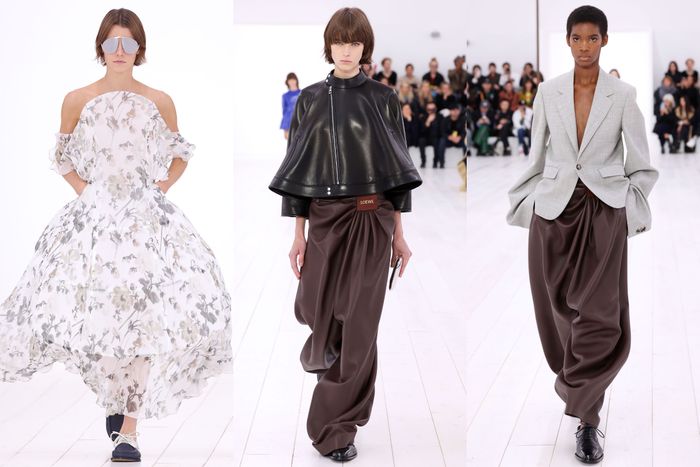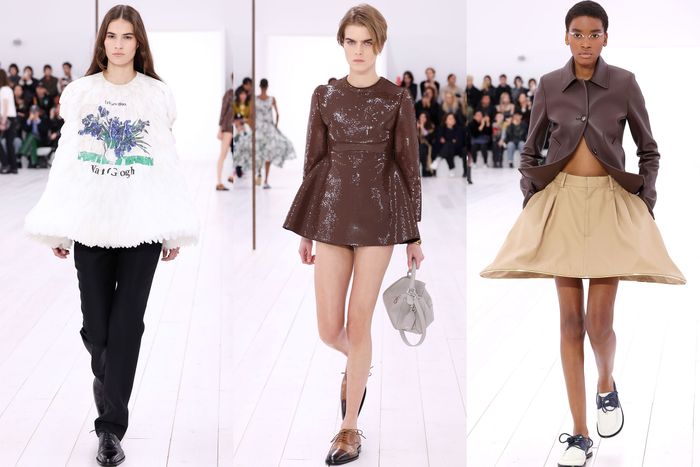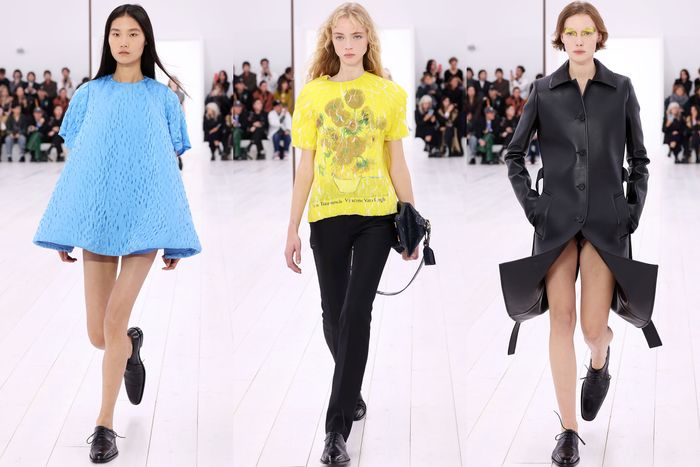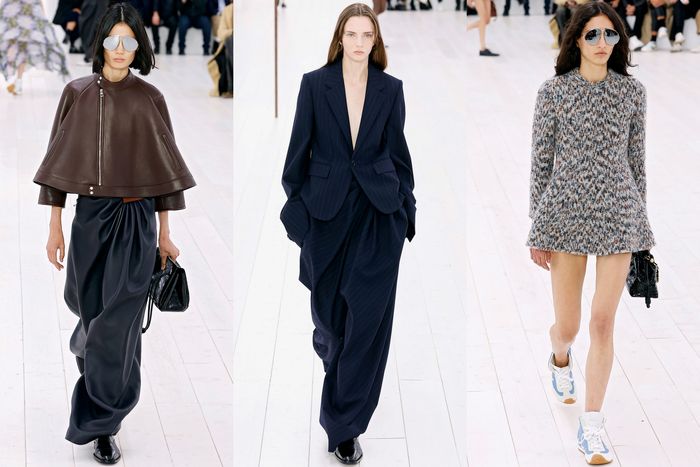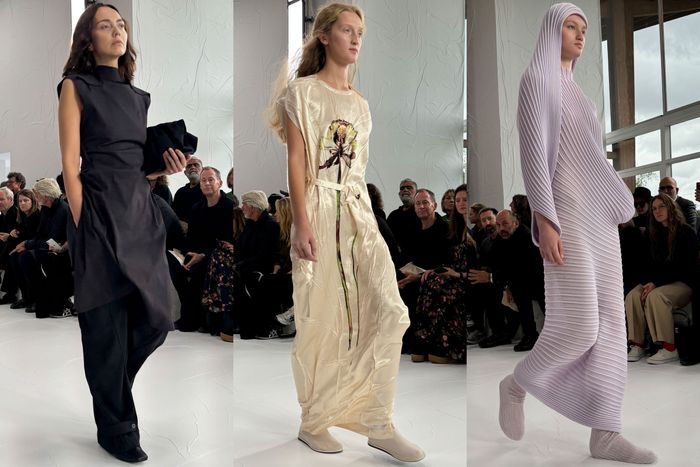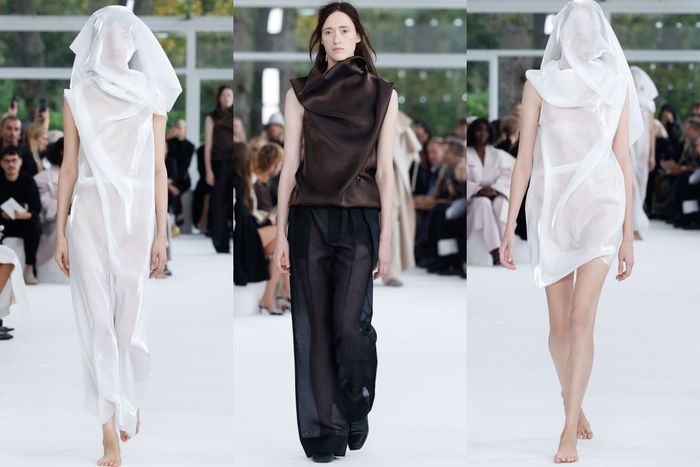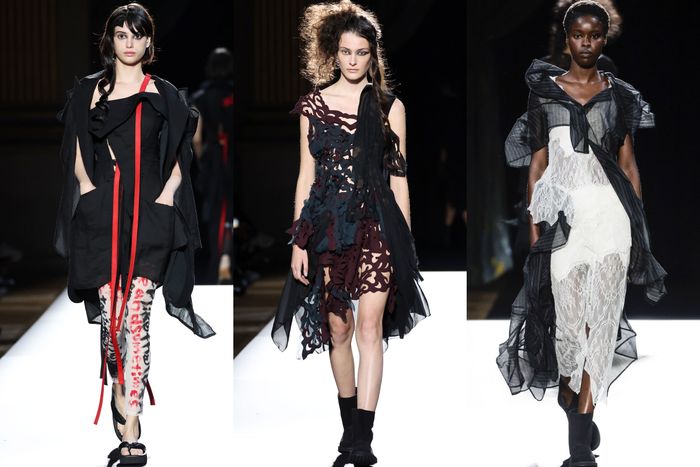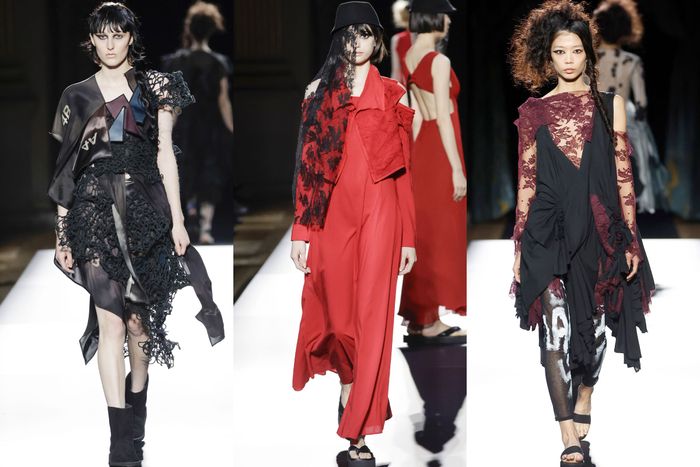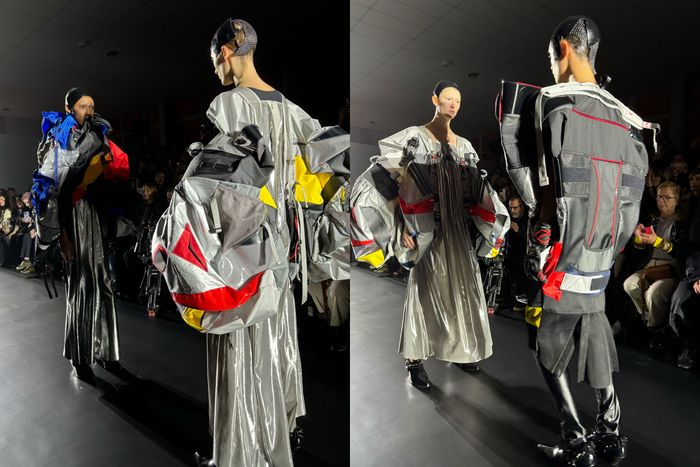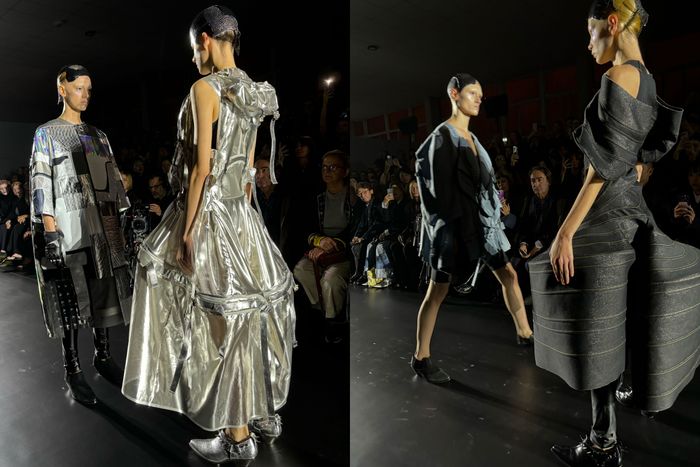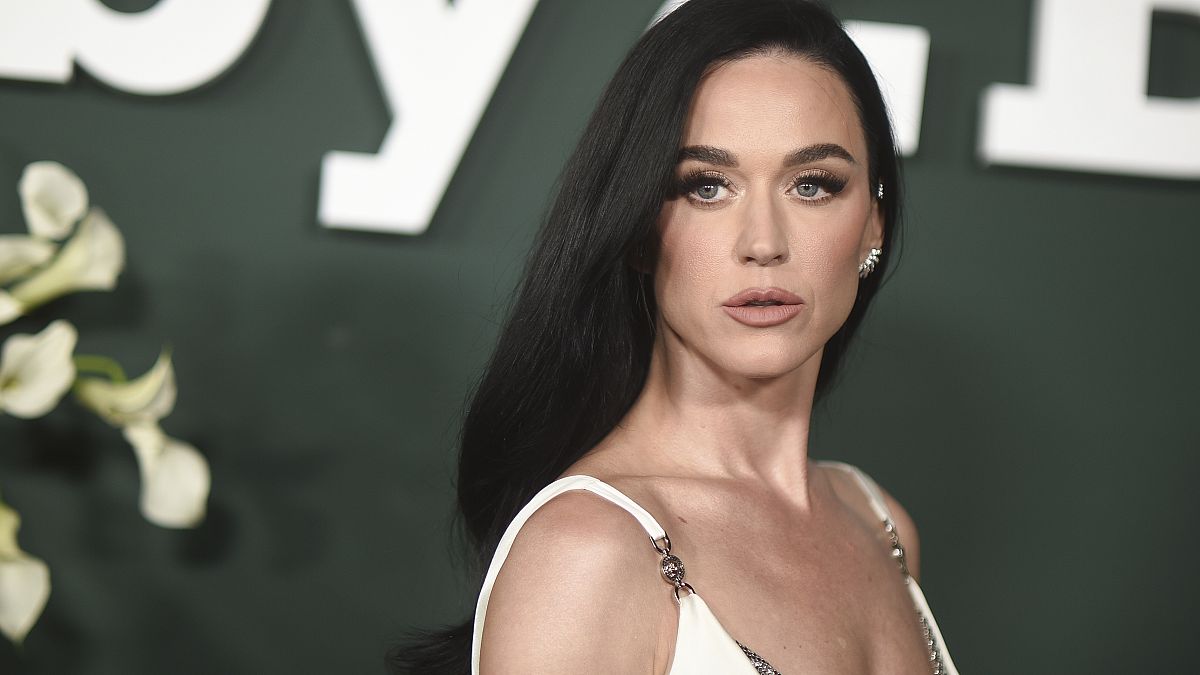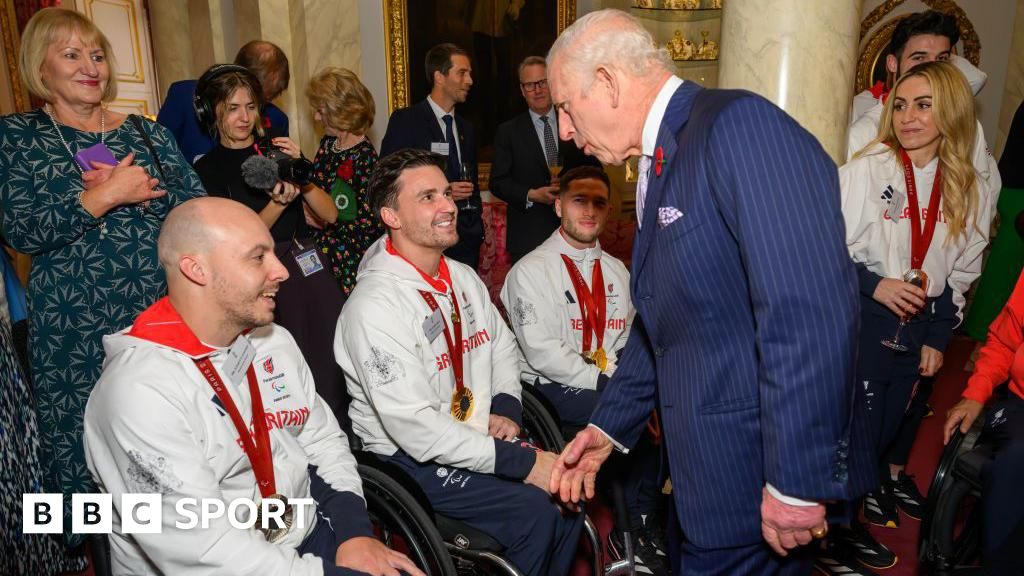Fashion
A Loewe Collection So Great It Makes Me Wonder
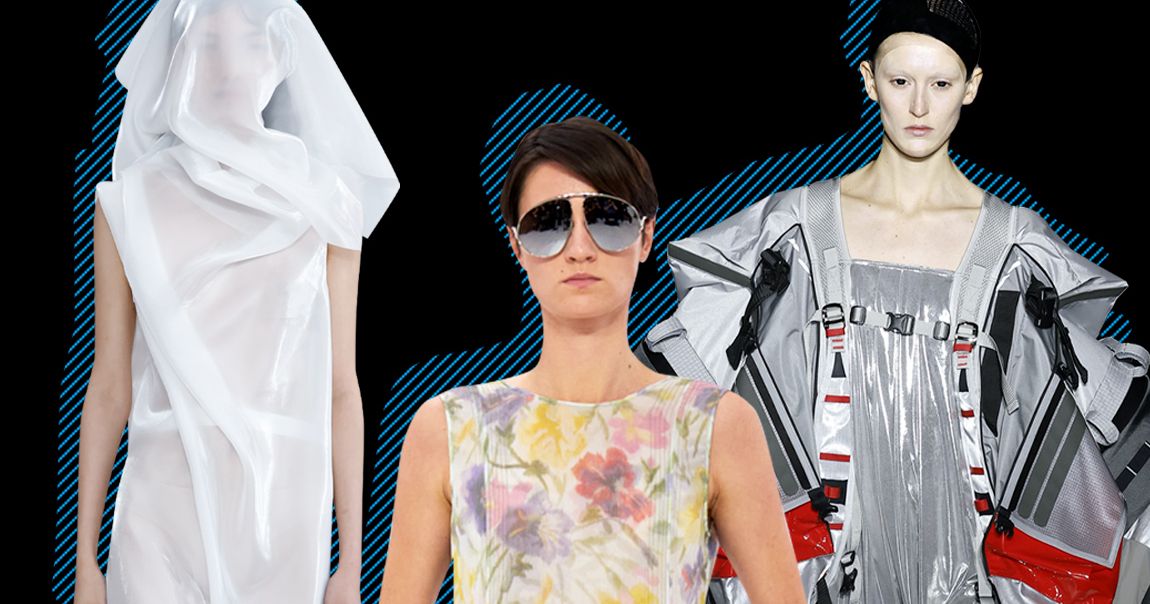
Left to right: Issey Miyake, Loewe, Junya Watanabe
Photo-Illustration: by The Cut; Photos: Courtesy of Issey Miyake, Loewe, Getty Images
In 2013, LVMH tapped a relatively unknown designer named Jonathan Anderson to take over Loewe, a leather goods brand founded in Madrid in 1846 that had been struggling for years to find a contemporary look. Born in Ireland and trained as an actor before he discovered fashion’s smoke and mirrors, Anderson had the idea of rooting Loewe’s style in images of Ibiza in the 70s. “We had to invent a fashion language for the brand,” Benjamin Bruno, the stylist who works with Anderson, recalled in a 2022 profile of the designer. And one of his first acts was to strike “1846” from Loewe.
Thus unmoored, Anderson was free to take his initial long-skirted Ibiza girl in different directions. (Romantics travel well.) He used references to classical painters and costumes, newfangled materials, and Japanese and American craft traditions in ceramics and basketry. The emphasis on handcrafts — beyond, that is, needlework — allowed Anderson to expand Loewe’s language, as well as its audience, and he caught the growing interest in crafts at a crucial moment, when people were looking for a little more feeling and oddity than big fashion houses were giving.
Loewe
Photo: Getty Images
Still, in 2022, when I reported the profile of Anderson, the brand wasn’t getting the traction he wanted. At the time, annual sales were around $1 billion, and while that was a significant jump from 2013, Loewe was niche and, in a way, stuck. It was not perceived as daring or new enough. Then, during the pandemic, he and Bruno decided to make a radical turn. Bruno said they were sick of “the linen-y parade, full of trinkets.” Looking at the situation pragmatically, Anderson, who is also good at marketing, felt that if he were going to stay in fashion, he had to make Loewe one of the top five brands that people engaged with — up there with Prada and Balenciaga.
That’s when he took the conceptual leap into Surrealism, a move that completely changed how people saw Loewe and, more importantly, Anderson over the next two or three seasons.
On Friday, for his 2025 spring collection, he brought the story full circle — or at least, the optics implied that Anderson was completing a story. As part of the invitation to the show, he included a gold-plated ring with “1846” stamped on it. The runway was a circle within a large square, and in the middle was a four-meter-high slender black pole with a small metal starling on top, minding its own fucking business. It’s by the artist Tracy Emin. The flooring was white-washed boards, and the lighting was masterful: a recessed glow from the white ceiling and a series of small spotlights on the walls. The opening look, a floral-print cotton dress wafting on a few crinoline bones like a jellyfish, might have alluded to Anderson’s early historical costume forays. Except this dress, like much of the collection, was gloriously reduced. And the design itself was conceptual rather than literal-minded.
Loewe
Photo: Getty Images
“The craft has become introvert rather than extrovert,” he said. Jonathan Anderson has grabbed the ring; you might say, with this collection, which flows from his June men’s show.
And was it his final Loewe show? You could feel that something was up from the unusually large gathering of fellow designers, including Pieter Mulier of Alaia and Sarah Burton of Givenchy, and several top LVMH executives, notably Delphine Arnault, the chief executive of Dior. Also in the crowd was the director Luca Guadagnini, for whose recent films, Challengers and Queer, Anderson designed costumes. Most guests round the circle stood, applauding, and Anderson looked teary. The man has also been itchy to move on, to a different and more demanding role. And why not? He’s proven himself. He’s ambitious. He can use his talents more fuller at a bigger house. My bet, as long as people in Paris are speculating about fashion’s musical chairs, is that Anderson is in line for Dior.
Loewe
Photo: Getty Images
Those numerous wafting dresses, in prints inspired by humble 1930s floral roller prints, are right up the Dior alley. Actually, they recall Yohji Yamamoto’s adaptations of historical Parisian couture — as recently as 2015, when he did a collection called “Broken Crinoline.” Again, though, Anderson’s are greatly reduced and tersely feminine. Yama-dior! With a tiny but visible golden band running round its hem, a model’s plain brown skirt looked like an erratic lampshade. The edges of her leather jacket were turned slightly upward, as if caught in a breeze. Other designers, including Demna of Balenciaga and Prada’s Raf Simons and Miuccia Prada have also been injecting movement into clothes, sometimes by means of wires embedded in seams. (Prada also did it last week in its women’s show.)
Additionally, Anderson worked with feathers (all poultry by-product), shell fragments for blurry mosaics, and sleek, transparent coatings — a technique that worked well on simple, intensely colored tea-cup mini dresses, a shape he introduced a couple of seasons ago and which seems more in step today. Especially strong, and certainly wearable, were his tailored jackets with full, draped trousers, either in a tropical-weight blend or super-soft leather. They repeat a style from the men’s show, with the sleeves cut somewhat wide and long — to give a look of exaggerated elegance when your hands are buried in the trouser pockets.
Loewe
Photo: Getty Images
“I quite like the gesture,” Anderson said, adding, “I think tailoring is about the subtly of the change, and it’s taken me years to understand that. I’m not a tailor.” Along with the exquisite morning suit he showed last season, the tailoring left me wanting to see more. And perhaps lost amid the shiny and springy runway looks were flawless black cigarette pants in a silk-mohair blend.
Issey Miyake
Photo: Cathy Horyn
An hour later, in a pavilion overlooking a rain-soaked park, Satoshi Kondo, the artistic director of Issey Miyake, was offering his quiet magic with clothing that integrated the traditional Japanese paper known as washi, either in material substance or crinkly texture (for light tan coats and ensembles, for instance). The work, which included hooded and draped white shifts that looked like fine membranes, was both magisterial and realistic in terms of summer wear.
Issey Miyake
Photo: Courtesy of Issey Miyake
How like Yamamoto, who has done everything in his long career — and influenced so many — to make a serious study of scraps. That’s how the mostly black clothes looked on Friday night, adorned with clusters of diversely shaped pieces of fabric, including pinstripes and laces. He ended the reverie, accompanied by live piano music, with half a dozen plain red jersey dresses, the models’ faces partially veiled in black lace.
Yohji Yamamoto
Photo: Getty Images
Yamamoto likes to leave his intent open to interpretation. Dressing for a scatter-brain world? Decorative reuse of materials? Blood on the tracks? The old man tipped his hat at the audience at the end, and grinned. Who knows?
Yohji Yamamoto
Photo: Getty Images
This morning, the Paris shows received an electrifying jolt of creativity from Junya Watanabe. Starting from oversized jackets and full skirts in silvery fabrics, Watanabe seemed to be making a case for repurposing everyday objects like gym bags, zippered pouches and even what looked like bits of the padded protective gear of athletes and skateboarders. They were artfully piled on or embedded in the garments.
Junya Watanabe
Photo: Cathy Horyn
Yet many of the shapes looked quite historical, like Belle Epoque sleeves and cinched waists, while others made the models — their features almost blanked out by the makeup, their hair smoothed under tiny caps — as they had morphed into sci-fi machines. In an inventive collection, Watanabe also used shiny coatings for denim, along with patchwork in different textures. He made it seem a new world, again, for high fashion.
Junya Watanabe
Photo: Cathy Horyn

